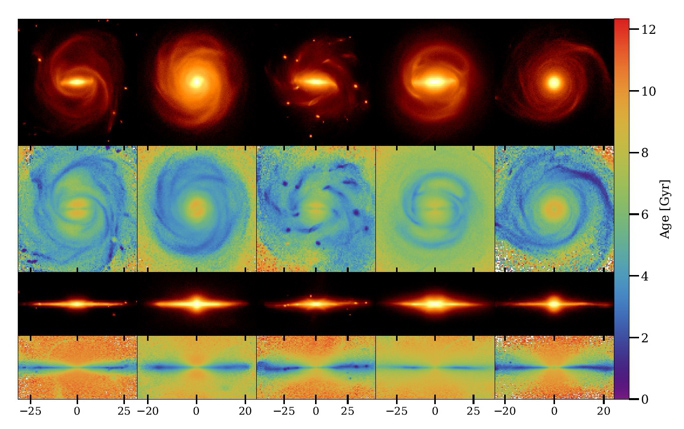On the Flaring of Thick Discs of Galaxies: Insights from Simulations

LIV.DAT PhD student Joaquín García de la Cruz is working in the field of Galactic Archaeology, which consists on reconstructing the history of galaxies from its present state. This field is experiencing a revolution thanks to missions like Gaia and experiments like MUSE, which are providing an unprecedented amount of high-quality data about the Milky Way (MW) and nearby galaxies. Simulations, on the other hand, are excellent tools for understanding the data, and thanks to more advanced computational techniques, the creation and analysis of these simulations are improving greatly as well.
A good place to look for “fossils” or remnants of a galaxy’s past is the thick disc, the more diffuse and vertically extended component of the disc. This is because thick disc stars are usually older and carry with them information of past events happening billions of years ago. So, Joaquín’s project focuses on the analysis of thick disc of simulated galaxies and finding features that can help recover the evolution of their host galaxies.
For that, he analysed zoom-in cosmological simulations, where 33 galaxies with dark matter, stars, and gas, are evolved from redshift z=5 to z=0 within the ΛCDM cosmological frame. These galaxies are star forming spiral galaxies that have a range of stellar mass spanning from 1010 and 2 ᵡ 1011Mʘ, and have evolved in relatively isolated environments, just as we know for the MW. A simulated galaxy sample with such characteristics allows not only to make meaningful comparisons with the MW or neighbouring galaxies, but also helps discern the question of whether the MW is a very unique galaxy or not.
In an article just published in Monthly Notices of the Royal Astronomical Society, Joaquín classified the simulated galaxies into two groups based on different properties of their thick disc, such thick disc flaring and radial age gradients, and the galaxy’s evolutionary history. One group matches features found in the MW, including recent observational discoveries of the MW’s early times mass assemble, while the other group shows a diversity in those features that only recently the scientific community is starting to be able to analyse because of the aforementioned data revolution the field of galactic Archaeology is experiencing.
Further information:
García de la Cruz et al, “On the Flaring of Thick Discs of Galaxies: Insights from Simulations”, Monthly Notices of the Royal Astronomical Society, Volume 501, Issue 4, March 2021, Pages 5105–5120 https://doi.org/10.1093/mnras/staa3906